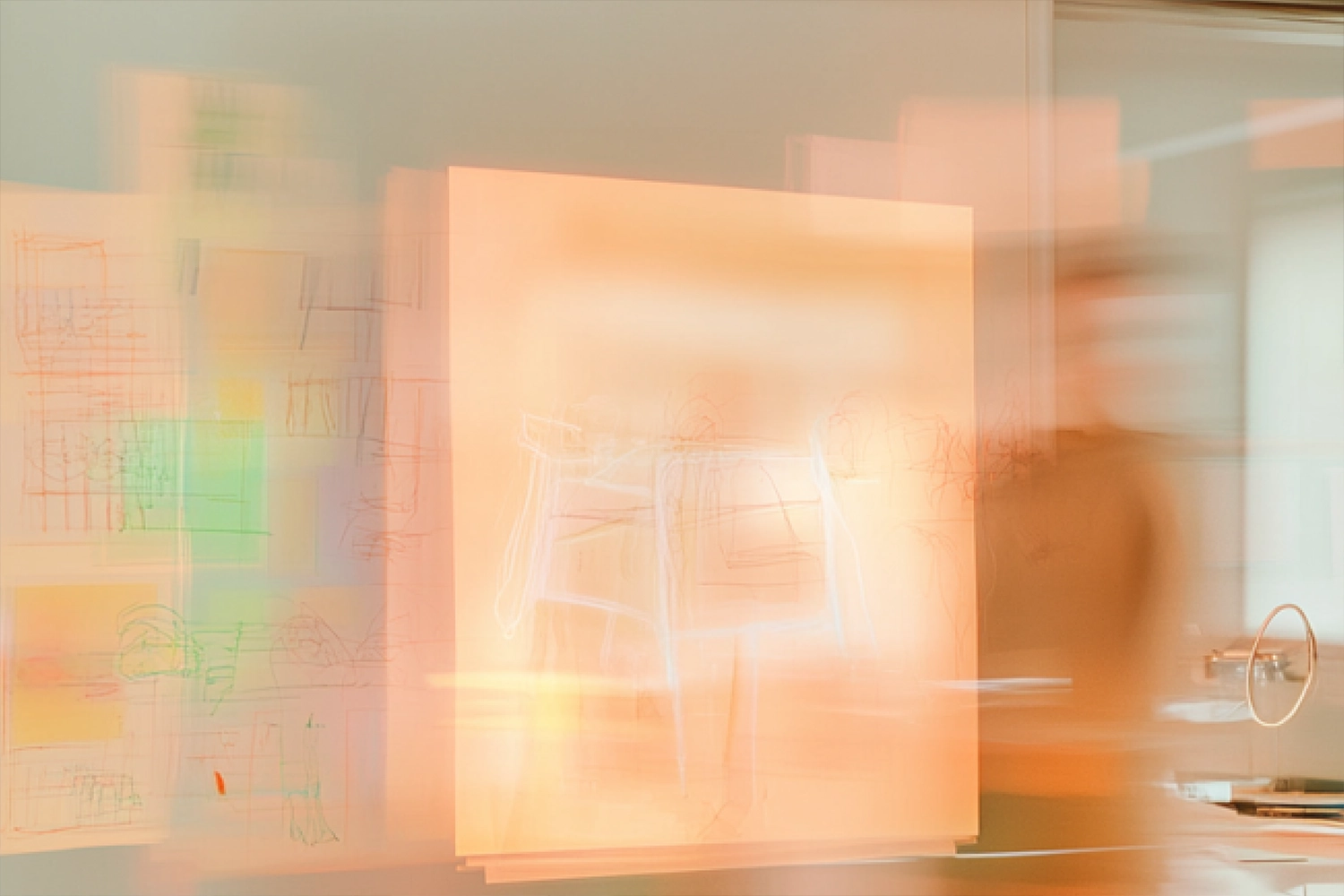05/13/2025 • by Jonas Kellermeyer
Grasping the future – The significance of physical prototypes

If we want to make the influence of future technological realities on our individual existences tangible, there is no way around the creation of physical prototypes. Only by means of them can we really grasp the significance of what's to come!
Visions of a future present and current concepts for the future
Thinking about the future is always a highly speculative endeavor. We all do it from time to time, but very few of us engage professionally in creating a potentially resilient vision of the future present. Such a vision must be sharply distinguished from the much more common way of characterizing imminent times: namely as current futures. Where the former is an imaginative creation in which fiction plays a major role, the latter is a more sober evaluation of the possibilities that present themselves. By and large, the difference lies in the intensity of the respective drafts: where current drafts of the future work primarily on the values and norms of the here and now, and ultimately assert the vision as the result of current trends, the art of conceiving a future present lies in largely emancipating oneself from the norms that we consider fundamental today. An object-based idea of life in another time stands at the end of a corresponding ideation process. So where a present draft of the future remains primarily as a (utopian) narrative, future presences are dependent on haptic qualities, i.e. they want to be physically grasped. All this leads us from mere (ideational) discourse to manifest (material) design.
From speculative discourse to speculative design
If we want to deal with the future professionally, the goal is crucial: are we interested in critically reflecting on current attitudes and actions, or do we want to make future realities as accurate and vivid as possible? Both perspectives are justified, but are based on fundamentally different foundations.
In order to convey a realistic understanding and a credible idea of a future time, the development of a concrete look and feel is crucial. To make it comprehensible how something could actually work, we need physical objects that we can touch and thus really grasp. A purely speculative discourse remains limited in this respect without speculative design. Only when visions become tangible prototypes can the future be grasped in the truest sense of the word.
Prototypes as a bridge between concept and reality
Physical prototypes not only serve to validate and communicate ideas, but are also a means of transforming abstract concepts into concrete knowledge. When encountering prototypes, users and designers alike discover new questions and unexpected solutions. Interaction with tangible models generally opens up perspectives that do not (or cannot) become visible in purely theoretical considerations.
In this respect, prototypes act as a communication medium between the different players in an innovation process: they help to reduce misunderstandings in specific situations, promote a common understanding and enable iterative improvement cycles. They are particularly indispensable in the development of technological innovations and in the context of corresponding research, as they make it possible to experience not only technical functionalities, but also cultural and social implications.
Ultimately, physical prototypes are more than just precursors to finished products. They are essential tools that expand our collective imagination and enable an action-oriented engagement with the future that could hardly be more immersive.
Prototyping the Future(s)
In our course “Prototyping the Future(s)”, we dedicate ourselves to precisely this task. The aim is not only to provide participants with theoretical methods and tools, but also to enable them to physically realize their own designs for the future. Concrete prototypes are developed that enable participants to visualize abstract ideas, discuss them with each other and ultimately gain tangible insights for the conscious design of future living environments. This course clearly shows how important it is to gain a feeling for the world of (beyond) tomorrow through physical interaction with material and digital prototypes.
